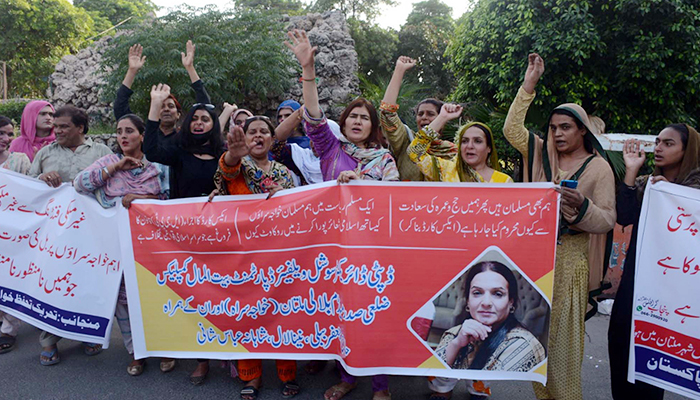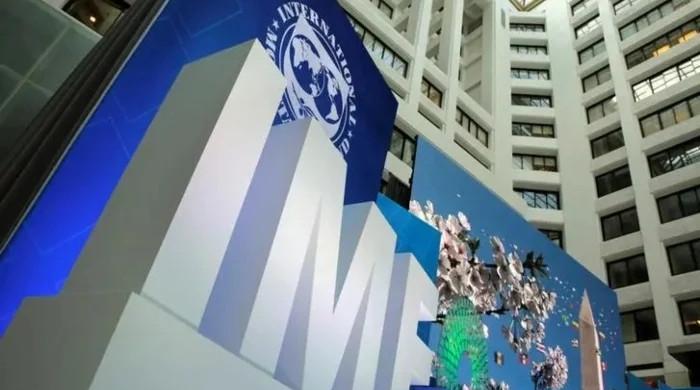The Transgender Person Protection of Rights Act is a progressive law
Transgender persons are also biologically either male or female. It is their assigned gender that diverges from their biological sex
September 26, 2022

Fiddling with the words of Virginia Woolf, I take the liberty to reiterate that the history of people’s resistance to trans people’s emancipation is more interesting than the story of emancipation itself.
Our lawmaking bodies have failed to uphold the rights of the people. The most tragic part of our human rights history is that most of the activism that has taken place in the country has been to demand basic rights.
Even in the 21st century, the people of Pakistan ask their representatives to make laws for the protection of women, children, trans people and religious minorities; this is nothing more than a fundamental right as enshrined in the constitution.
At the moment, religious parties in the country have reinvigorated an old debate to resist the law related to the rights of trans people. The Transgender Person Protection of Rights Act of 2018 is a progressive law and is one of the few laws that has been accepted unanimously by the government and the opposition.
It aims at giving right to identity, dignity, education, health and employment to the transgender community; which is, in essence, only a right to exist. The act exclusively defines the word ‘transgender’, which shall help mitigate the derogatory terms associated with people from this community.
Most people are misinterpreting the law, leading to baseless allegations against the community. Many of them have perceived the law as advocating for and normalizing same-sex relationships.
Some see it as a ‘cultural invasion’ by the West, while others are confusing ‘gender dysphoria’ with ‘gender identity’. Some have irrationally associated the act with the collapse of the marital system in the country.
Our people’s ability to build a rationale while linking an issue to a conspiracy is oddly enjoyable. These concerns are largely illusory. The words – or words synonymous to – ‘marriage’ or ‘same-sex’ are not even mentioned in the act.
Little do people know that the prevalent transphobia in South Asia is a manifestation of an actual foreign conspiracy by imperialist Great Britain.
Gender dysphoria is being wrongly called a ‘disease’ when it is in reality a phase of uneasiness in a person’s life whose biological sex and gender do not get along.
Another problem here is that right-wing politicians are adamant to enforce their definition of the word ‘transgender’. This is condescending and an attempt to further patronize an already repressed faction of Pakistani society.
It remains unclear why they wish to uphold the status quo. Either their perception is blurred due to lack of knowledge or their resistance to the community is aimed as a populist tactic.
In both cases, the will to reform the general perception towards the transgender community is nowhere to be found.
To make sense of the law and other purposefully obscured realities, it is important to shed some light on the crux of the matter. Almost all the people speaking against the rights bill are unable to tell the difference between the terms used in the act. The education system of our country is equally culpable.
Biology is messy. Biological sex, gender identity and expression, and sexual orientation are complex terms. Despite being distinct from one another, they are often interchanged.
Biological sex is announced at birth. Biologically, people are either male or female. That is all there is to biological sex. Gender comes next in line. It is defined as the collective set of roles in a society associated with either men or women.
Usually, the family of a new-born baby decides to nurture their baby with masculine characteristics if the baby is male or with feminine characteristics if the baby is female. People whose gender aligns with their biological sex are cis-gendered.
However, a person’s gender does not necessarily align with their biological sex. The preferred term is ‘transgender’. This is in no way a disease or disorder.
Transgender persons are also biologically either male or female – ie: they have naturally either male or female body parts. It is their assigned gender that diverges from their biological sex.
This means that people who were biologically identified as male can have feminine characteristics, or people who were biologically identified as female can have masculine characteristics.
Choosing to identify oneself based on one’s choice of masculine or feminine genders is what this law is all about. In a first, a transgender person is being enabled to legally identify their natural self.
The Transgender Persons (Protection of Rights) Rules, 2020 and the Transgender Persons (Protection of Rights) Act, 2018 are two different documents. By reading the former, any misconception regarding the latter can be cleared. Had the people read the two documents they would know the backlash is unfounded.
Having said this, every law, including this one, must be protected from being abused. Various additions are still required to make it comprehensive.
Those criticizing the law by citing their concerns must realize that just like any other act, this law will evolve as well. More gender experts must be consulted to make a vivid sense of the law. The definitions of several other misunderstood terms, like transsexual and pronouns, are missing. Nonetheless, the bill is a good start.
If things go well, it will pave the way for transgender inclusion in the legislative process. After all, transgender representation is necessary for the evolution of the laws pertaining to the community.
The writer is a scholar of history and politics. He tweets @naumanbhatti_1 and can be reached at: [email protected]









